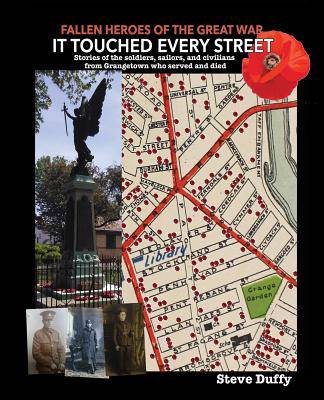
- Retrait gratuit dans votre magasin Club
- 7.000.000 titres dans notre catalogue
- Payer en toute sécurité
- Toujours un magasin près de chez vous
- Retrait gratuit dans votre magasin Club
- 7.000.0000 titres dans notre catalogue
- Payer en toute sécurité
- Toujours un magasin près de chez vous
It Touched Every Street
Stories of the soldiers, sailors, and civilians from Grangetown who served and died
Steve Duffy
20,95 €
+ 41 points
Description
The World War I memorial in Grange Gardens, Grangetown, Cardiff, has long been a focal point in the park, not only for the casual visitor but also for events of remembrance. It dates from 1921 and is a lasting record of the hundreds of men who gave their lives between 1914-18. But who were these people who made the ultimate sacrifice? Where did they live before enlisting? What did they do in civilian life? How and where did they die? The Grangetown Local History Society, together with volunteers set out to answer these questions. The starting point for the research was the 330 names of soldiers and sailors and their regiments/ships on the memorial. This seemed on the face of it a straightforward enough task, albeit time-consuming. What was not foreseen was discovering another 150 or so men and women had been omitted. It was only when we started examining the names in more detail that we come across anomalies, errors, and a few names which still remain a mystery. The research involved poring over newspaper columns, obituaries, and family notices in archives of the South Wales Echo, Western Mail and Cardiff Times . We also consulted the Commonwealth War Graves Commission records, military records of various kinds, including regimental diaries, as well as local directories and the Glamorgan Archive. There was a fair bit of cross-checking and online detective work, especially with some of the more elusive names. In this we were aided by the families of the fallen, who submitted their own stories and photographs, often involving their own research. Local historians also offered suggestions and snippets. The discovery of so many missing names of Grangetown casualties led to the project going further than its original intention. Progress has been updated on our website www.grangetownwar.co.uk. As the picture became clearer, we were able to compile street-by-street lists and casualty lists in date order. We commemorated each death on our Twitter feed as its centenary anniversary passed. The use of such technology would have been difficult to explain to the committee behind the memorial 100 years ago.
Spécifications
Parties prenantes
- Auteur(s) :
- Editeur:
Contenu
- Nombre de pages :
- 212
- Langue:
- Anglais
- Collection :
Caractéristiques
- EAN:
- 9781789420319
- Date de parution :
- 09-11-18
- Format:
- Livre broché
- Format numérique:
- Trade paperback (VS)
- Dimensions :
- 190 mm x 235 mm
- Poids :
- 371 g

Les avis
Nous publions uniquement les avis qui respectent les conditions requises. Consultez nos conditions pour les avis.






